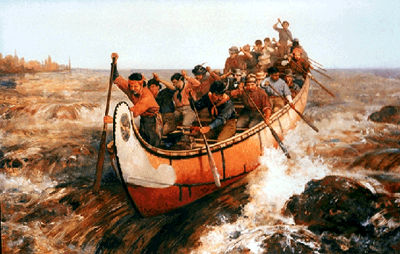Rita Joe (1932–2007)
[Add text here]

Suggested Sources:
Film by Brain Guns, “Song of Eskasoni (28 min)” National Film Board website, https://www.nfb.ca/film/song_of_eskasoni/
[Add text here]

Suggested Sources:
Film by Brain Guns, “Song of Eskasoni (28 min)” National Film Board website, https://www.nfb.ca/film/song_of_eskasoni/
[Add text here]
Suggested Sources:
Related Contents:
[Add text here]


Suggested Sources:
Related Contents:
“C’est l’aviron” (traditional)
“J’entends le moulin” (traditional)
“V’là le bon vent” (traditional; France)
“Chevaliers de la table ronde” (traditional)
“Auprès de ma blonde” (traditional; France)
“À Saint-Malo beau port de mer” (traditional; France)
Other Materials:
[Add text here]
Suggested Sources:
Official website: https://www.claudedubois.ca/biographie/
Related Contents:
“La chasse-gallerie (1978)”
[Add text here]
Related Contents:
“La manic”
Suggested Sources:
Marthe Léger & Sarah Hanahem, “Pauline Julien : naissance de la ‘passionaria du Québec’,” Bibliothèque et Archives Nationales du Québec. Published online: 12 June 2024. Accessed online [date]: https://www.banq.qc.ca/explorer/articles/pauline-julien-naissance-de-la-pasionaria-du-quebec/
https://ici.radio-canada.ca/nouvelle/1126694/pauline-julien-quebec-politique-archives
[Add text here]
Related Contents:
“Le grand six pieds,” Claude Gauthier chante Claude Gauthier (1961)
“Le plus beau voyage,” Le plus beau voyage (1972)
Suggested Sources:
Paul Piché was born in 1953 in Montréal and grew up in Laval and La Minerve. Originally trained as an archeologist, he began singing and songwriting at university, performing in many boîtes à chansons in Québec. His first big breakthrough began when he opened for Beau Dommage (one of the most prominent rock groups in Québec) in the 1970s and was scouted by one of its members, Robert Léger.
Léger encouraged Piché to record his first album, helping him find a record company that would be interested. This was the Kébec-Disc label, which also recruited such talent as Diane Dufresne, Gilles Rivard and Marie Denise Pelletier. An amusing anecdote that Piché and Léger recounted in a 40-year retrospective of the recording of his first album was that Piché initially refused to record with an electric bass, thinking that the sound would overwhelm his voice and the other acoustic instruments.[1]
Piché’s first album, À qui appartient l’beau temps? (1977) had a measured success when it was initially released. Still, eventually, the song “Heureux d’un printemps” helped the album reach sales of between 100,000 and 200,000 copies in 1978, making it one of the most successful albums of Québécois music.
Along with his musical career, Piché is also devoted to political and environmental activism and was a prominent member of the Sovereigntist movement. In 2002, he travelled 550km by bike to deliver a letter to the premier of Québec, protesting the continued construction of hydroelectric dams on Québécois rivers.[2] He continues to be an active member of the artistic and political landscape of Québec and published his first book in 2007, which talks about some of the political events and trends he participated in.
[1] “Heureux d’un printemps, Paul Piché|La Trame sonore du Québec,” posted December 3, 2024 by Bibliothèque et Archives nationales du Québec, Youtube, 6 min., 28 sec, https://www.youtube.com/watch?v=cDhaYpZufp4.
[2] “Paul Piché.” Panthéon des auteurs et compositeurs canadiens, accessed March 16, 2025, https://www.cshf.ca/fr/songwriter/paul-piche/.
Suggested listening:
Piché, Paul. À qui appartient l’beau temps (Version Deluxe). Audriogram, 2012. https://www.youtube.com/watch?v=BSoQQBWOvfk&list=PL9V-Gix3aQTlYmCaL0VooYwb9sLbdsvIy.
Piché, Paul. L’escalier. Audiogram, 1991. https://www.youtube.com/watch?v=OBik9_JR6Wk&list=PL9V-Gix3aQTldbFms-xZexQCO5CO5npht.
Suggested sources:
“Heureux d’un printemps, Paul Piché|La Trame sonore du Québec.” Posted December 3, 2024 by Bibliothèque et Archives nationales du Québec. Youtube, 6 min., 28 sec. https://www.youtube.com/watch?v=cDhaYpZufp4.
“Paul Piché.” Panthéon des auteurs et compositeurs canadiens. Accessed March 16, 2025. https://www.cshf.ca/fr/songwriter/paul-piche/.
Boisvert-Magnen, Olivier. “Anniversaires des Albums Marquants : Il y a 40 ans : Paul Piché- À qui appartient l’beau temps?.” Voir, March 9, 2017. Accessed March 16, 2025. https://voir.ca/musique/2017/03/09/paul-piche-il-y-a-40-ans-a-qui-appartient-lbeau-temps/.
Thérien, Robert. “Piché, Paul.” The Canadian Encyclopedia/L’Encyclopédie Canadienne, December 16, 2013. Accessed March 16, 2025. https://www.thecanadianencyclopedia.ca/fr/article/piche-paul.
Related Contents:
[Add text here]
Related Contents:
“La bitt à tibi,” Allô tôulmônde (1975)
[Text here]
Related Contents:
“Le tour de l’île” (1975)
“L’alouette en colère” (1971, 1975)
From the Canadian Encyclopedia:
Mary Rose-Anne Bolduc (née Travers), singer, songwriter, harmonica player, fiddler (born 4 June 1894 in Newport, QC; died 20 February 1941 in Montreal, QC). Madame Bolduc, or simply La Bolduc, was Quebec’s first chansonniere. Joyous, likeable and dynamic, she was popular just before and during the Great Depression. Known as the “Queen of Canadian Folk Singers,” she sang about the daily problems and difficulties of ordinary life and was guided by a keen sense of observation. Songs such as “La Cuisinière,” “La Servante,” “Le Commerçant des rues,” “L’Enfant volé,” “Les Colons canadiens” and “Les Conducteurs de chars” made her a legend in Quebec. La Bolduc had a profound influence on the evolution of the Quebec chanson. Her work is considered a prototypical and permanent part of Quebec’s musical legacy. She was inducted into the Canadian Songwriters Hall of Fame in 2003.
Related Contents:
“La bastringue”
“Ça va venir découragez-vous pas” (1930)
Suggested Sources: